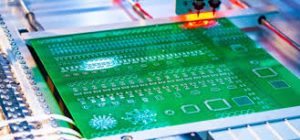Prototyping a printed circuit board (PCB) is an integral part of electronic design process. Engineers and designers use PCB prototypes to hunker down their prototype designs before full-scale production. In this article, we will see what real benefits of prototyping in PCB development are — examples of specific data and practical advantages that tell you why it cannot go without the prototyping phase throughout electronics production.
Design Flaws Detected Earlier
A PCB prototype can help you pinpoint design flaws long before your board goes into production. Costs a lot more money to fix a bug in PCB during production (about 10x) than when you find it in the design phase from statistics. Fixing these issues early on allows companies to reduce up to 80% in total repair costs that they would face in mass production.
Improved Design Efficiency
By using PCB prototypes, designers can test multiple components and ciruit layouts to see which ones perform better in the end-design process – a big step up from their standard days. Typically, there is an iterative aspect to this process in which better design pathways with respect to size and cost are found as a final product requires less & less material. For example, prototyping might show that a new material or a minor change in the design can cut manufacturing costs by 15% and improve performance.
Reducing Time to Market
Being able to move quickly is critical in the highly competitive electronics space. An appropriately done PCB prototype phase means that the design will be close to perfect before moving into production. Companies utilizing cutting-edge techniques for prototyping can reportedly reduce product development cycles by up to 50%, giving them a head start in launching products before their competitors.

Improving the Product Reliability
In electronics, Reliability is key. A PCB prototype run serves to test the functionality of the circuit board across different physical and environmental settings to make sure that it can withstand tough use over an extended time period. This kind of hands-on testing can root out failures that would cost a recall later. Anecdotal evidence suggests that earlier use of prototyping approaches in these industries can increase the reliability of electronic products by as much as 30%, leading to substantial reduction is warranty cost.
Enabling Regulatory Compliance
The PCB prototype makes it easier for companies to meet the regulatory standards. Such early models help companies run compliance tests that are needed before the final production phases. This includes validation for electromagnetic compatibility (EMC), regulatory safety, and further testing to meet international requirements during the prototype phase that would otherwise result in dangerous legal consequences or monetary damages.
Boosting Consumer Confidence
A well tested product if presented to the market will increase consumer confidence and brand reputation. By thoroughly testing their prototypes, this tells customers they are serious about the quality of their product and also boost sales and reputation in the market.
To sum up, pcb prototype development is not only an initial phase but also a powerful weapon that significantly increases the potential success of any product. Adding PCB prototyping at the initial stages of product development helps in cutting down costs, timings and enhancing your electronic products quality making you a leader in market.